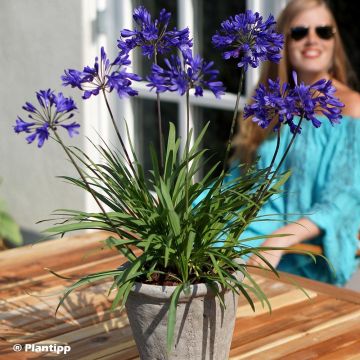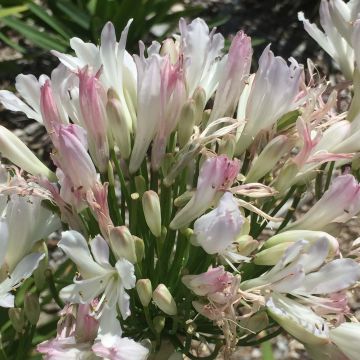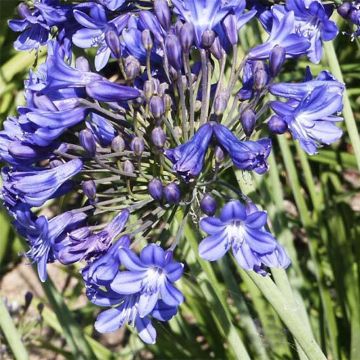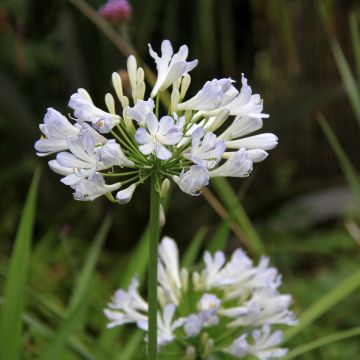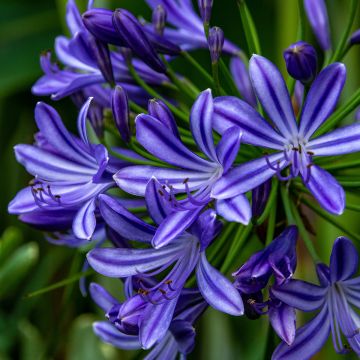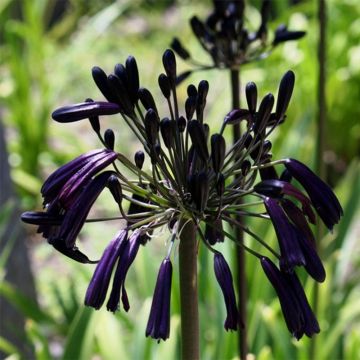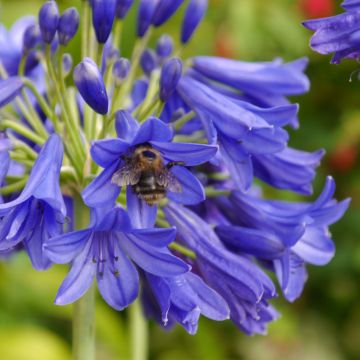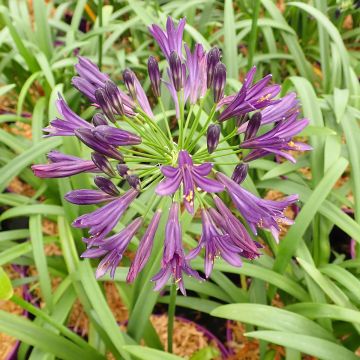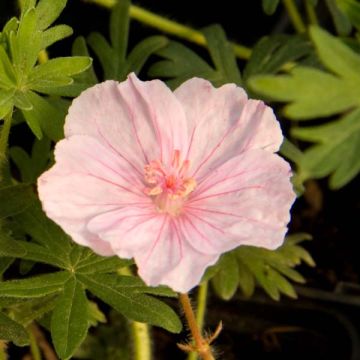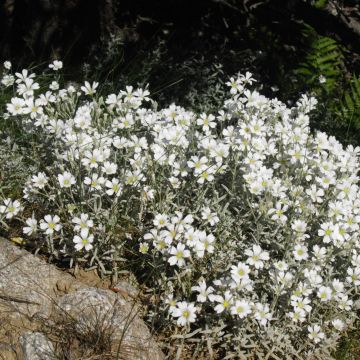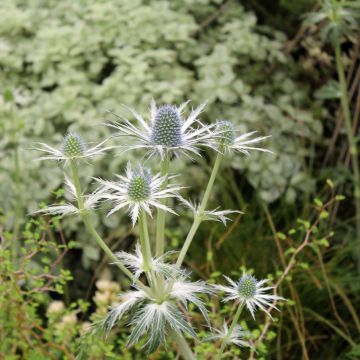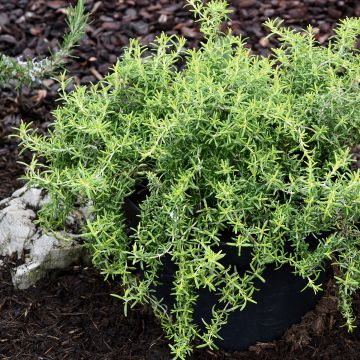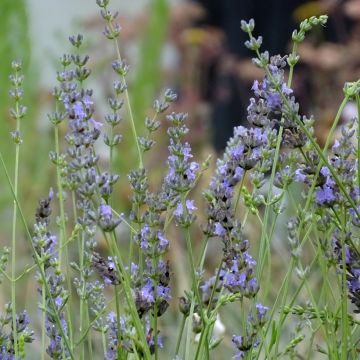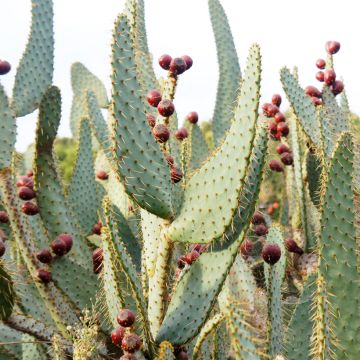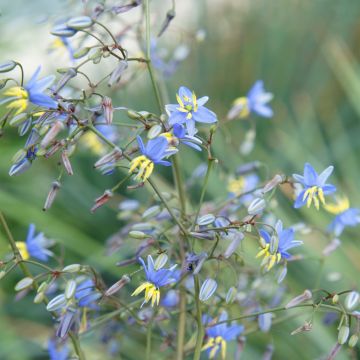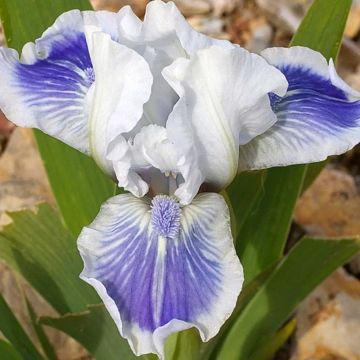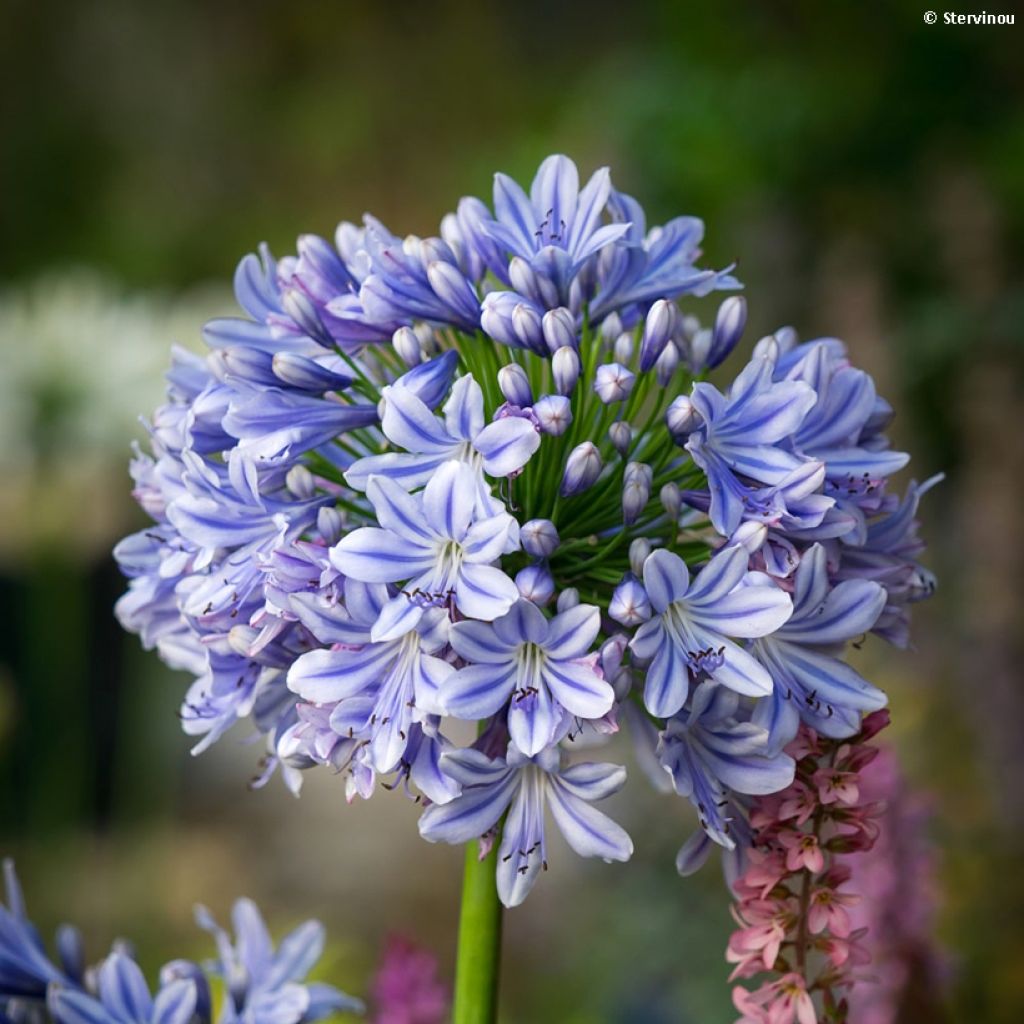

Agapanthus Full Moon
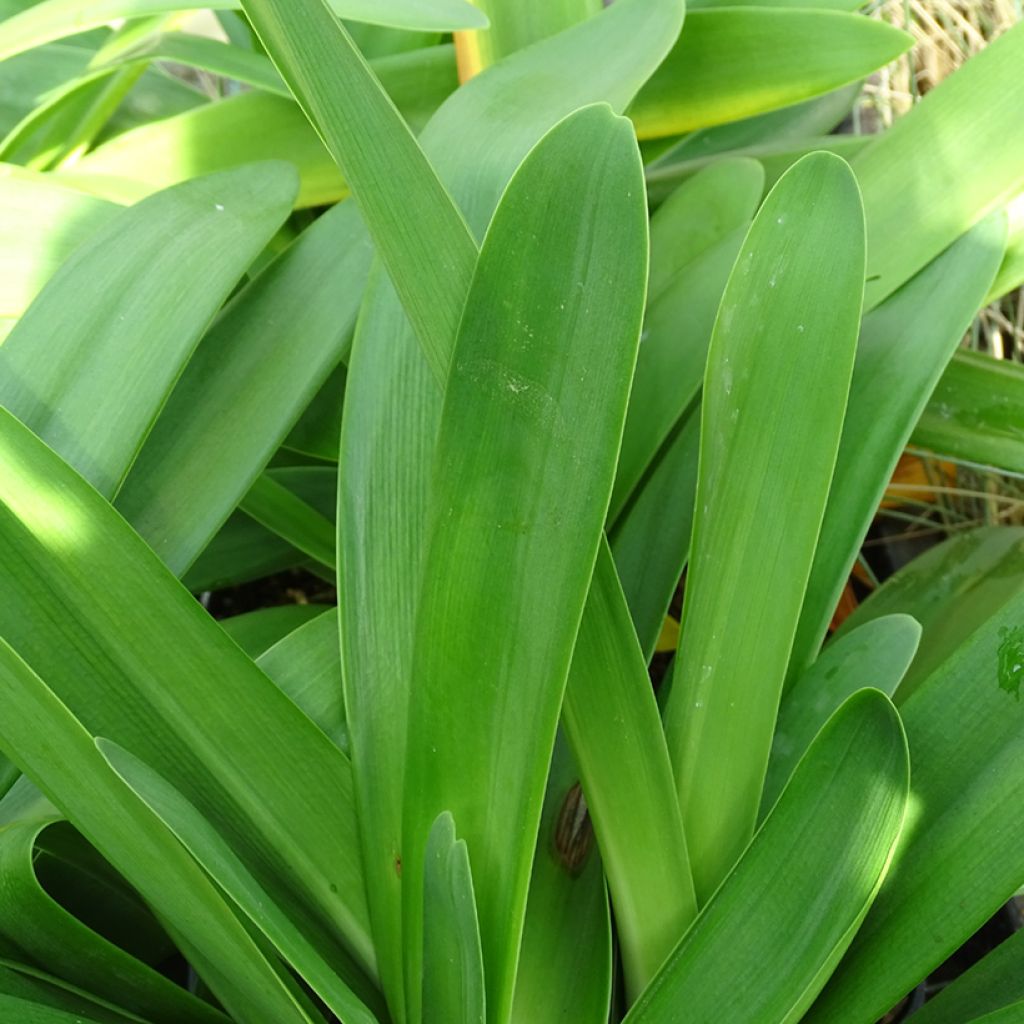

Agapanthus Full Moon
Agapanthus Full Moon
Agapanthus praecox subsp. orientalis Full Moon
African Lily, Lily of the Nile
Thank you to the individuals (for order preparation and shipping service), the received plant appears healthy. Planted near the "Château de Cheverny" rose, I am now patiently waiting for it to take root...(or not?).
Thierry, 29/04/2023
This item cannot be shipped to the selected country
Delivery charge from €5.90
More information
Schedule delivery date,
and select date in basket
This plant carries a 12 months recovery warranty
More information
We guarantee the quality of our plants for a full growing cycle, and will replace at our expense any plant that fails to recover under normal climatic and planting conditions.
From €5.90 for pickup delivery and €6.90 for home delivery
Express home delivery from €8.90.

Does this plant fit my garden?
Set up your Plantfit profile →
Description
The Agapanthus 'Full Moon' is an agapanthus that beautifully lives up to its name of "full moon" with its perfectly round umbels filled with flowers. "Blue moon" would also perfectly describe its delicate light lavender blue colour streaked with darker blue. The flowers stand tall above a beautiful clump of ribbon-like leaves in a bright green colour, which remain evergreen in winter. Like all evergreen agapanthus, this variety is not very hardy, but it requires less water than deciduous varieties. Particularly well-suited for milder regions this variety also thrives when grown in pots, allowing it to be overwintered in colder regions. And its flowers are stunning in bouquets.
Agapanthus are plants from the lily family native to South Africa. Several species have been extensively hybridised by horticulturists in search of new colours, more compact and hardier plants, better adapted to our climates. The cultivar 'Full Moon' is a descendant of Agapanthus praecox subsp. orientalis, a very beautiful evergreen plant sought after for its large dense umbels. This Full Moon variety was selected by Richard Jamieson in South Africa. This perennial plant develops and multiplies rapidly from a powerful rootstock with fleshy rhizomes, forming over time a dense clump of linear foliage, in a bright and shiny green colour, reaching 50 cm in all directions. The spectacular flowering takes place between July and August depending on the climate. Tall cylindrical flower stems emerge from the foliage clump. They bear at their tips compact spherical umbels, of modest size, but composed of numerous trumpet-shaped flowers. Each flower has 6 petals fused into a tube at the base, in a pale lavender blue colour, crossed by a line of darker blue. The foliage of this variety remains evergreen in winter.
Agapanthus Full Moon is a plant that is not very hardy, but of great ornamental value. It brings a lot of character to a coastal garden or an urban terrace, in a contemporary or exotic setting. This variety will easily adapt in milder winter regions, without requiring much maintenance. Whether in a mass planting, in a border, in a large rockery, in a pot or planter, Agapanthus is suitable for a wide range of uses. It is particularly well-suited for coastal climates. 'Full Moon' is very beautiful when combined with other blue, mauve or white varieties in a minimalist setting. It is also highly decorative in exotic-themed beds with Dianella, Kniphofias, Hemerocallis, grasses, and Cannas.
Report an error about the product description
Agapanthus Full Moon in pictures
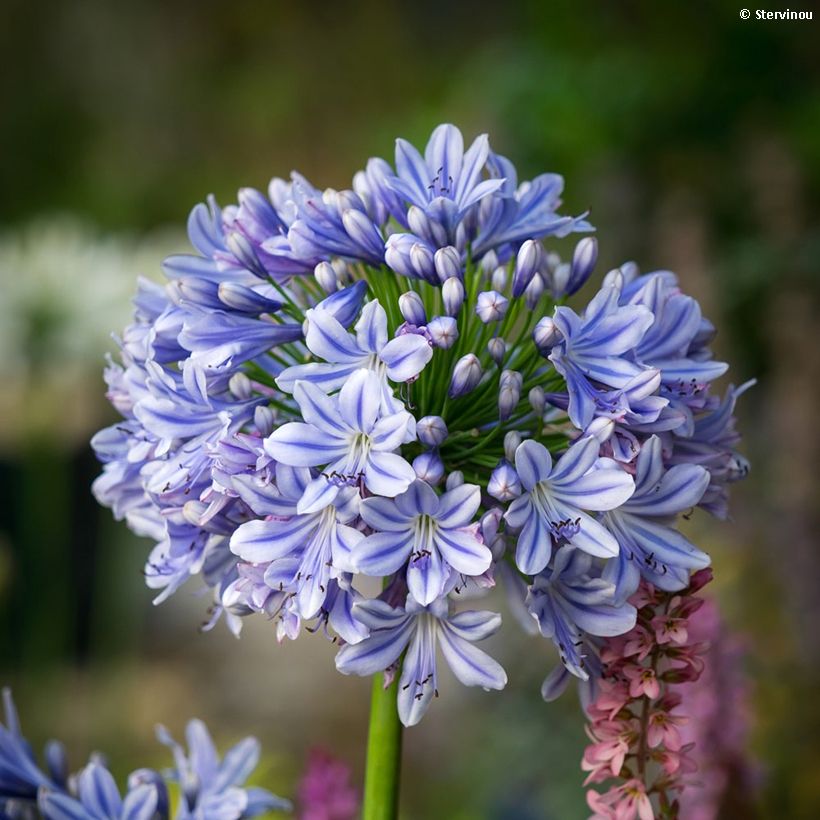

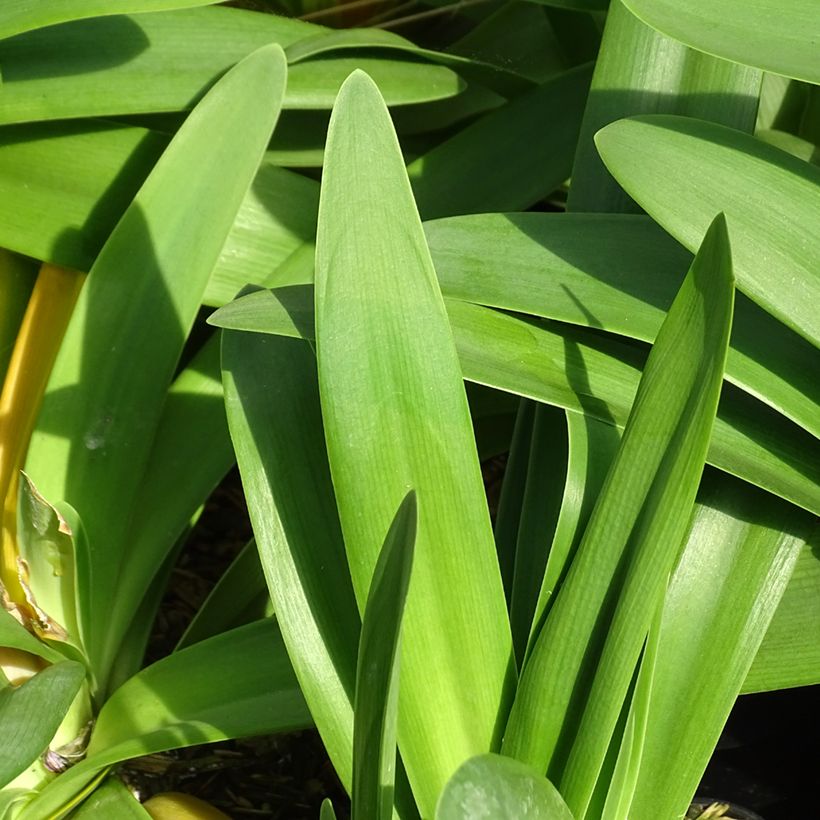

Flowering
Foliage
Plant habit
Botanical data
Agapanthus
praecox subsp. orientalis
Full Moon
Alliaceae - Liliaceae
African Lily, Lily of the Nile
Cultivar or hybrid
Other Agapanthus - Lily of the Nile
Planting and care
Plant Agapanthus Ful Moon stumps by covering them with at least 10 cm of good soil, as this will make them more resistant to cold. It is essential to plant them in spring and preferable to mulch them in winter in most regions. For container gardening, use 5 young plants for a 24 cm pot and protect your pots in winter. They prefer a rich and moist, but well-drained soil, enriched with sand. Water them regularly during the growth period (twice a week). However, avoid watering them afterwards. They are sensitive to winter moisture excess. This variety is hardy up to approximately -5°C in a sheltered position, it tolerates drought quite well and thrives particularly well by the sea. Its foliage can be damaged from -3°C. Use a sandy, well-drained mixture, slightly acidic to slightly alkaline. This plant seems to prefer shallow, but wide containers, and will bloom abundantly if regularly fed wier.
Planting period
Intended location
Care
-
, onOrder confirmed
Reply from on Promesse de fleurs
Mediterranean perennials
Haven't found what you were looking for?
Hardiness is the lowest winter temperature a plant can endure without suffering serious damage or even dying. However, hardiness is affected by location (a sheltered area, such as a patio), protection (winter cover) and soil type (hardiness is improved by well-drained soil).

Photo Sharing Terms & Conditions
In order to encourage gardeners to interact and share their experiences, Promesse de fleurs offers various media enabling content to be uploaded onto its Site - in particular via the ‘Photo sharing’ module.
The User agrees to refrain from:
- Posting any content that is illegal, prejudicial, insulting, racist, inciteful to hatred, revisionist, contrary to public decency, that infringes on privacy or on the privacy rights of third parties, in particular the publicity rights of persons and goods, intellectual property rights, or the right to privacy.
- Submitting content on behalf of a third party;
- Impersonate the identity of a third party and/or publish any personal information about a third party;
In general, the User undertakes to refrain from any unethical behaviour.
All Content (in particular text, comments, files, images, photos, videos, creative works, etc.), which may be subject to property or intellectual property rights, image or other private rights, shall remain the property of the User, subject to the limited rights granted by the terms of the licence granted by Promesse de fleurs as stated below. Users are at liberty to publish or not to publish such Content on the Site, notably via the ‘Photo Sharing’ facility, and accept that this Content shall be made public and freely accessible, notably on the Internet.
Users further acknowledge, undertake to have ,and guarantee that they hold all necessary rights and permissions to publish such material on the Site, in particular with regard to the legislation in force pertaining to any privacy, property, intellectual property, image, or contractual rights, or rights of any other nature. By publishing such Content on the Site, Users acknowledge accepting full liability as publishers of the Content within the meaning of the law, and grant Promesse de fleurs, free of charge, an inclusive, worldwide licence for the said Content for the entire duration of its publication, including all reproduction, representation, up/downloading, displaying, performing, transmission, and storage rights.
Users also grant permission for their name to be linked to the Content and accept that this link may not always be made available.
By engaging in posting material, Users consent to their Content becoming automatically accessible on the Internet, in particular on other sites and/or blogs and/or web pages of the Promesse de fleurs site, including in particular social pages and the Promesse de fleurs catalogue.
Users may secure the removal of entrusted content free of charge by issuing a simple request via our contact form.
The flowering period indicated on our website applies to countries and regions located in USDA zone 8 (France, the United Kingdom, Ireland, the Netherlands, etc.)
It will vary according to where you live:
- In zones 9 to 10 (Italy, Spain, Greece, etc.), flowering will occur about 2 to 4 weeks earlier.
- In zones 6 to 7 (Germany, Poland, Slovenia, and lower mountainous regions), flowering will be delayed by 2 to 3 weeks.
- In zone 5 (Central Europe, Scandinavia), blooming will be delayed by 3 to 5 weeks.
In temperate climates, pruning of spring-flowering shrubs (forsythia, spireas, etc.) should be done just after flowering.
Pruning of summer-flowering shrubs (Indian Lilac, Perovskia, etc.) can be done in winter or spring.
In cold regions as well as with frost-sensitive plants, avoid pruning too early when severe frosts may still occur.
The planting period indicated on our website applies to countries and regions located in USDA zone 8 (France, United Kingdom, Ireland, Netherlands).
It will vary according to where you live:
- In Mediterranean zones (Marseille, Madrid, Milan, etc.), autumn and winter are the best planting periods.
- In continental zones (Strasbourg, Munich, Vienna, etc.), delay planting by 2 to 3 weeks in spring and bring it forward by 2 to 4 weeks in autumn.
- In mountainous regions (the Alps, Pyrenees, Carpathians, etc.), it is best to plant in late spring (May-June) or late summer (August-September).
The harvesting period indicated on our website applies to countries and regions in USDA zone 8 (France, England, Ireland, the Netherlands).
In colder areas (Scandinavia, Poland, Austria...) fruit and vegetable harvests are likely to be delayed by 3-4 weeks.
In warmer areas (Italy, Spain, Greece, etc.), harvesting will probably take place earlier, depending on weather conditions.
The sowing periods indicated on our website apply to countries and regions within USDA Zone 8 (France, UK, Ireland, Netherlands).
In colder areas (Scandinavia, Poland, Austria...), delay any outdoor sowing by 3-4 weeks, or sow under glass.
In warmer climes (Italy, Spain, Greece, etc.), bring outdoor sowing forward by a few weeks.

































